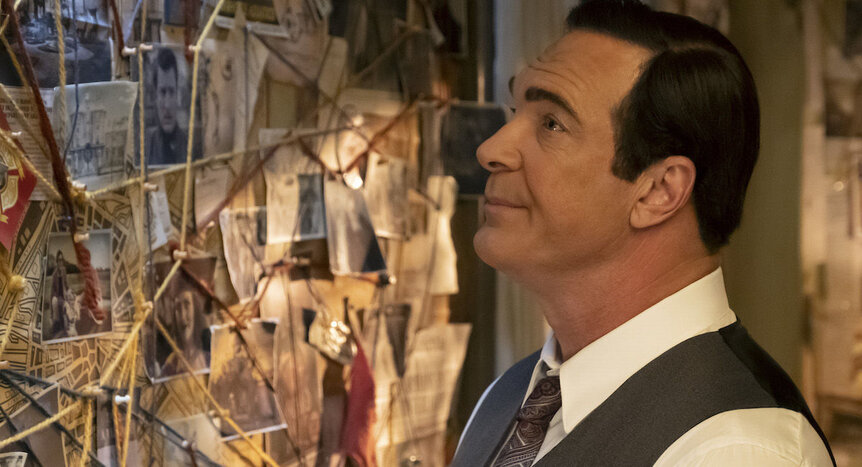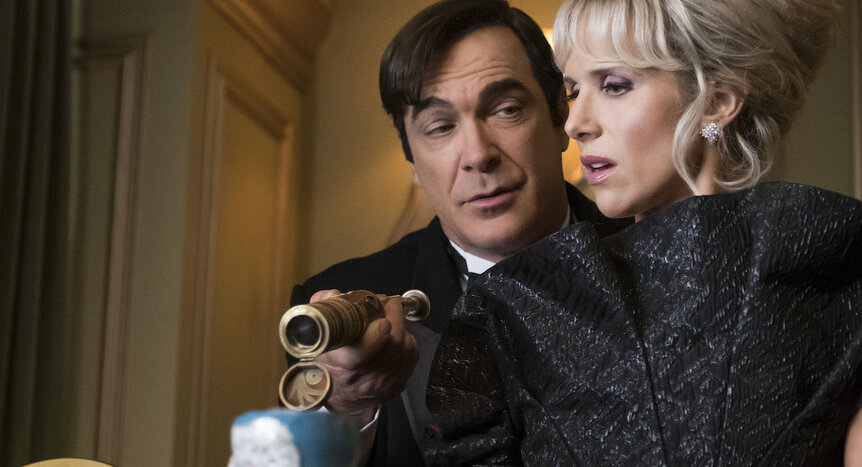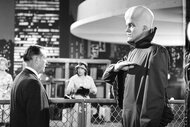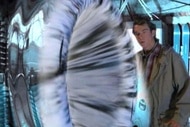Create a free profile to get unlimited access to exclusive videos, sweepstakes, and more!
Why your biggest questions in A Series of Unfortunate Events will never be answered
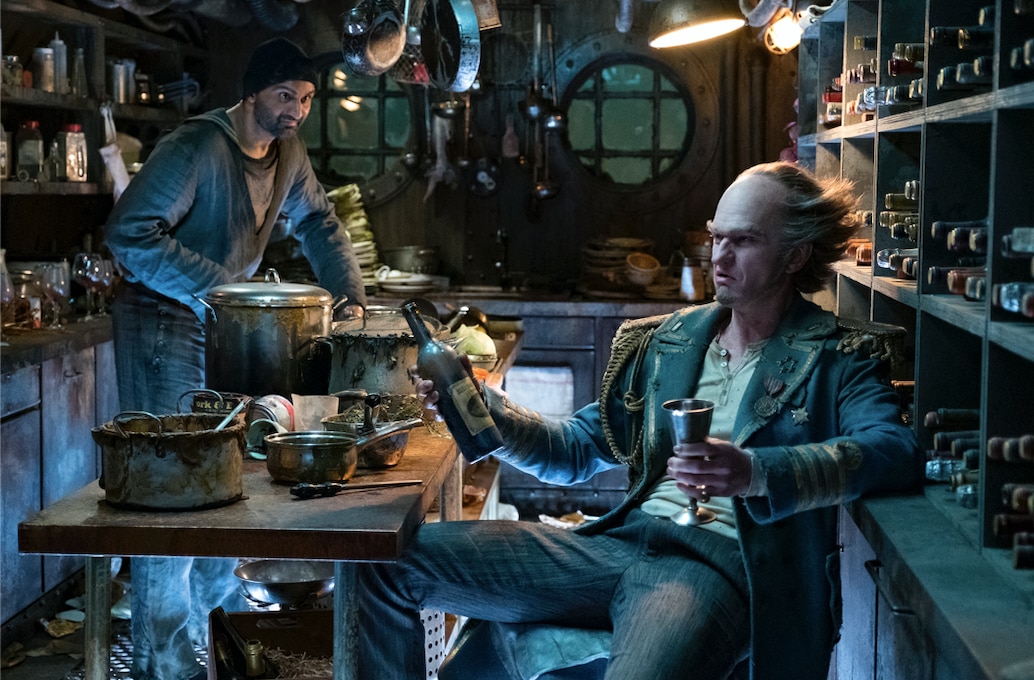
Because it's so damn smart, funny, and original, fans of Netflix's A Series of Unfortunate Events adaptation have every right to be disappointed that the show is over after three seasons. At the same time, if a fan is disappointed about not having every single question satisfactorily answered by series' end, that's likely because one element of the original Lemony Snicket books on which it's based didn't effectively translate.
If you've read the books, then you know the truth: That though the series is fundamentally faithful to the source material, the books are even more intentionally obscure than the show.
The many unanswered questions in A Series of Unfortunate Events' aren't a flaw — they're actually the point of the whole thing. On some level, Snicket's series mocks familiar tropes of fantasy/adventure stories, including the notion of tying up all the loose ends.
Spoilers ahead for the third season of A Series of Unfortunate Events and the ending of the Lemony Snicket book series All the Wrong Questions.
In the third season episode "The Slippery Slope,” Count Olaf snidely says, "I'm not interested in some late-series backstory!” in reference to the revelation that the Hook-Handed Man once worked at a research facility for a secret organization called VFD. This moment is a great meta-fictional joke, but it's also a good rubric for how to think about the entire series.
For the most part, an explanation for a plot point, a missing character, or the identity of a question mark on an underwater sonar aren't things author Daniel Handler (aka Lemony Snicket) spells out for readers in the books. Instead, through tiny clues, he hopes the readers will do the work on their own, or, more likely, come up with their own explanations. And though the show's twist with the Hook-Handed Man is loyal to the source material, this kind of expository backstory is rare in the books.
That's mostly because the author's narrative lens is intentionally limited not only to what the Baudelaire children experience but also to the scraps of clues their biographer has managed to gather. Unlike a TV show, the books never pull back and show us what someone else is doing in another location. There are also never any overt flashbacks. But why were the books written that way?
When I spoke to Handler in 2017 ahead of the show's first season, he said that "the troubling sense that the world is unreliable from start to finish, and that the haunting questions of childhood might never be answered” were his inspirations in crafting the stories to begin with.
Let that sink it. The author wanted to make a series of books for grade-schoolers that let kids experience a story that might be intentionally incomplete.
In practice, this notion gives the narrative arc of A Series of Unfortunate Events something on par with a Nabokov novel like Pnin; you don't really know if the narrator has his facts straight, and you're not sure if there is a "truer” fiction lurking beneath the fiction you're being told about. To put it another way, the vast majority of the Sherlock Holmes stories are narrated by Dr. Watson, the Lemony Snicket to the Baudelaire's Holmes. The difference, of course, is that Watson is with Sherlock on their adventures, while Lemony is piecing things together — mostly — after the fact.
The Netflix series plays fast and loose with this narrative distance, and — in one big change from the book version of The Penultimate Peril — actually has Lemony Snicket meet Sunny, Klaus, and Violet and offer them a ride in his taxi cab. Hardcore readers might argue that this isn't a change at all, but rather a clarification. In the book version, a mysterious man does offer the children a ride in a taxi cab and the narrator (Lemony) tells the reader he does know the identity of the cab driver, even though he doesn't come right out and say it. So, Snicket meeting the Baudelaires is actually a moment in which the show gives us a much more overt explanation than any offered in the books. In other words, if you're only a fan of the show, and you haven't read the books, you've actually got it better in the getting-questions-answered department.
The big news on this front is, of course, the Sugar Bowl. In the books, the contents of the Sugar Bowl were left vague (again on purpose) but in the Netflix series, we learn it contains a permanent inoculation against the deadly Medusoid Mycelium. Is the story better for this overt explanation? Maybe, maybe not. But, one thing is for sure: The Netflix show couldn't really get away with not explaining this, where the books could. Director and author Nicholas Meyer once said that the problem with movies and TV is that they "give you everything," which led him to look for ways to "withhold information” from the audience in his films. In the age of "mystery box” shows like Westworld, this more literary approach to making filmed entertainment seems old fashioned. It's in this less-than-obvious approach where A Series of Unfortunate Events exists.
And yet, if you're paying close attention and you've read all the books, then you actually can divine a few less-than-obvious answers to your questions lurking in one-off pieces of dialogue in the third and final season of the Netflix show.
Curious where Jacquelyn Scieszka was in Season 3? A comment from Mr. Poe tells you: She became the Duchess of Winnipeg, a character referenced a few times in the books, including the supplementary books The Beatrice Letters and Lemony Snicket: The Authorized Biography. Readers of The Beatrice Letters will also know that the ending of the show — which could be considered "new" if you've only read the 13 books in the main series — actually comes from the Beatrice Letters, too.
The Netflix show wasn't only adapting the 13 books in A Series of Unfortunate Events. The whole Lemony Snicket canon matters!
Want to know what that question mark was on the sonar screen on the submarines in "The Grim Grotto?” Fiona actually tells you. In that same episode, she says, "There's a book in our library about it written by Jacques Snicket's brother.” Of course, Jacques Snicket's brother is Lemony Snicket, and in addition to A Series of Unfortunate Events, there are four Lemony Snicket books called All the Wrong Questions, which chronicle Lemony's life when he was much younger. These books conclude with Snicket encountering a sea monster called the Bombinating Beast, which hardcore fans have assumed was "the Great Unknown” for a few years. So with this quick line on the show, this connection is made concrete.
This, perhaps more than any example, is proof of why the narrative secrets of A Series of Unfortunate Events are so intelligent and purposefully mystifying. A good story is like a sea monster lurking just beneath the waves. It's often better if you can't see it completely, and if the sea monster only surfaces every once in a while. Sadly, A Series of Unfortunate Events won't surface again on Netflix, but that doesn't mean the adventures of the Baudelaires — and Lemony Snicket — aren't still happening.
